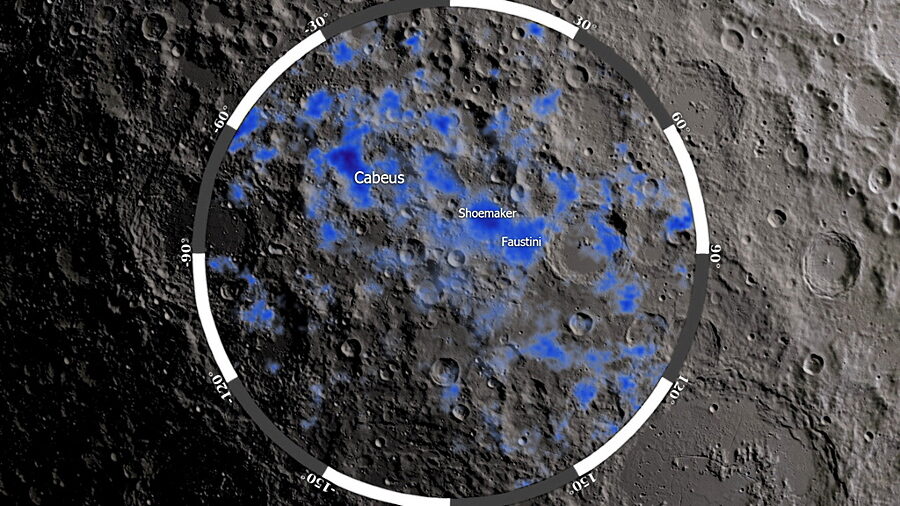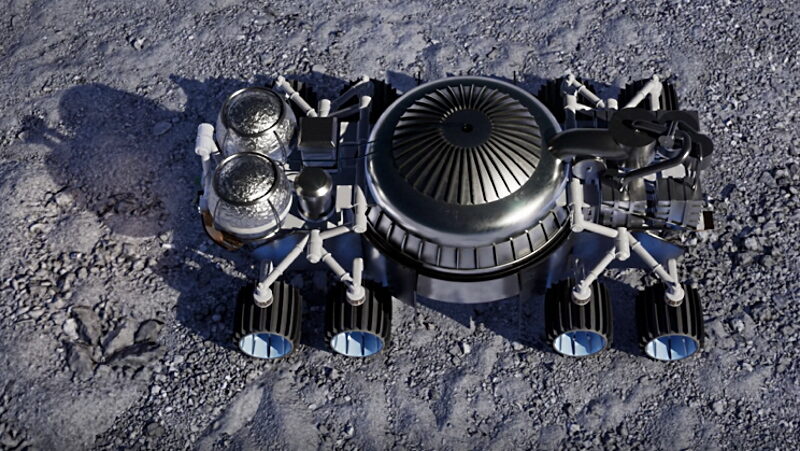The Moon's violent volcanic past may provide a vital lifeline for astronauts on future missions.
Those characteristic dark splotches on the Moon, also known as lunar maria, originated billions of years ago when a series of volcanic eruptions took place on the lunar surface.
Now, a new paper from researchers at CU Boulder predicts that those volcanoes may have also left ice sheets behind that may measure up to hundreds of feet thick in parts.
The Moon may be hiding 'big sheets of ice'
The researchers used advanced computer simulations and models to recreate the conditions of the Moon during and after its volatile volcanic past. Their simulations showed that the ancient Moon volcanoes threw out substantial amounts of water vapor, which came down to settle on the lunar surface, forming the ice sheets. "We envision it as a frost on the moon that built up over time," Andrew Wilcoski, lead author of the new study and a graduate student at CU Boulder, explained in a press release. If early humans were alive at that point, they may have even seen light reflecting off the ice from Earth.

NASA's Artemis program aims to establish a human presence on the Moon that can act as a stepping stone for future missions to Mars, with the first crewed Moon landing since 1972 expected to take place around the year 2025.
Increasingly, scientists and engineers are developing mining tools for future Moon missions to help them extract ice from under the lunar surface. This can be used for drinking water and also converted into oxygen for rocket propellant. The Rocket M, a mining rover built by Masten Space Systems, for example, is designed to reach lunar ice via controlled rocket blasts.
Volcanic eruptions on the Moon may have released 18 quadrillion pounds of water
The new study from the CU Boulder team adds to a growing body of evidence that the Moon is hiding much more water under its surface than once believed. In a previous study, Hayne and his colleagues estimated that almost 6,000 square miles of the lunar surface could have the capacity to trap and maintain ice.
Scientists are not completely sure where all this ice came from. "There are a lot of potential sources at the moment," Hayne explained, highlighting the volcano theory. The volcanic eruptions that occurred on the Moon are thought to "dwarf almost all of the eruptions on Earth," Hayne said. The CU Boulder researchers believe that the massive carbon monoxide clouds expelled by the volcanic eruptions may have caused short-lived atmospheres to develop, helping the water vapor to settle as ice on the surface.
According to their estimates, roughly 41 percent of the water from volcanoes could have condensed onto the lunar surface as ice, which could have been as much as 18 quadrillion pounds (around 8 quadrillion kg) of volcanic water — more than all of the water in Lake Michigan. The team believes that all of that ice is likely still there, buried beneath several feet of lunar dust or regolith, waiting to be uncovered by future Moon missions.




Reader Comments
Hydrogen and oxygen are abundant elements throughout the known universe and we humans are not smart enough to know all the ways they can come together to form di-hydrogen monoxide. Not the least of which would be through projection and combination at relativistic temperatures developed by the Sun when it farts in our general direction.
At the same time, didn't THEY just get through telling us the moon is hollow?
Is it now hollow because all the insides puked out? It must have been thousands of years ago. Water-ice 'evaporates' under Lunar surface conditions so how long has the ice been there?
I'm going back outside to watch for water to well up out of my lawn...